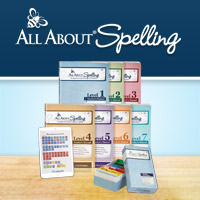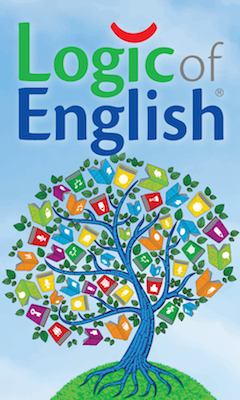On this page: Spelling | Handwriting
spelling
📚 All About Spelling. This relatively new program from All About Learning Press has already emerged as a favorite with homeschoolers. Why choose AAS? It's easy to teach; the materials are well-organized and follow a logical progression with built-in review; and its multisensory approach makes lessons effective for learners of all kinds. All About Spelling spans 7 levels, and most students will start with Level 1, regardless of age. Author Marie Rippel stresses moving at your child’s pace—work on spelling for just 20 minutes per day and stop; pick up the lesson the next day. The content builds so gradually and logically that students never hit a “wall”—instead, they add concept after concept to their toolbox and experience success. This program also works great for older students who have not had much spelling instruction or who have been struggling with spelling. All About Learning Press also offers All About Reading, and the two together create a very effective package. Also recommended for the wonderful customer service. – Elementary • Middle
📚 Logic of English. Logic of English is a multifaceted Language Arts curriculum that teaches reading while also addressing spelling, vocabulary, handwriting, and reading comprehension. What distinguishes Logic of English is its multisensory approach to reading instruction; the curriculum incorporates games, flashcards, workbooks, crafts projects, and handwriting practice. Start with Foundations then proceed to Essentials. – Preschool • Elementary
Handwriting
📚 Handwriting Without Tears. This program for teaching manuscript (printing) lives up to its name. It is a step-by-step, well thought out system for teaching handwriting in a systematic and relaxed way that takes the stress out of the process for both parent and child. Letters are grouped by path of movement, so that each new letter requires just a small extension of past knowledge (for example, after learning to write the letter c, the child progresses to o.) The teacher manual provides insight into topics like proper pencil grip and posture and offers many fun activities that really help to keep the activity playful and fun. Even those who don’t use the curriculum should check out the company’s unique manipulatives, including a slate and chalk set, a wooden stamp-and-see screen, and a roll-a-dough letters and numbers set. Highly recommended. – Elementary
📚 Cursive First. The Cursive First program, developed by Elizabeth FitzGerald, is often used by those who believe teaching cursive before printing is preferable. However, it works equally well for teaching cursive to students who already know how to print. The program comes with a teacher’s manual, a set of cards for each letter, and reproducible practice sheets for students. It does a great job of first establishing a common language for discussing letter formation (strokes are taught with specific names, such as the “uphill attic stroke”). Each letter is then taught using the stroke names. Lines are divided using fun, easy-to-remember names (the attic, the basement) that aid in remembering how to form letters. Practice sheets are divided into half-pages, which keeps them feeling doable and not overwhelming. The program is inexpensive, effective, and can be used through multiple children. – Elementary
📚 New American Cursive. This program bills itself as "an easy-to-follow resource for teaching beginning cursive.” It presents simplified letter forms, using multi-sensory methods to aid in learning the motor skills necessary to write well. Why choose New American? Like the other resources on this page, this three-book curriculum teaches a modern, less ornate cursive style that is more easily mastered; the books are bound at the top, making them a good choice for lefties. Finally, this is another good pick for those who want to introduce cursive early on: Book 1 can be started as early as Grade 1. – Elementary
📚 Logic of English. This multi-faceted LA curriculum, has a handwriting component, The Rhythm of Handwriting, that can also be used as a stand-alone program.– Preschool • Elementary
🖐️ Pencil Grips. Kids often need a little extra help with pencil grip during the early Elementary years. There are many grip options available, and it’s sometimes necessary to try out several different candidates before hitting on one that works best for your child. The linked image is for a personal favorite, the Pinch Grip, sold by The Pencil Grip, Inc. Check out other options from the company here. – Preschool • Elementary
🖐️ Lined Paper. If you’re using HWT, you can purchase extra double-lined writing notebooks or packs of paper. If you’re following a program that uses three-lined paper, consider providing extra practice using multisensory raised ruled tablets. Download triple-lined paper for free here. – Preschool • Elementary








